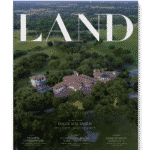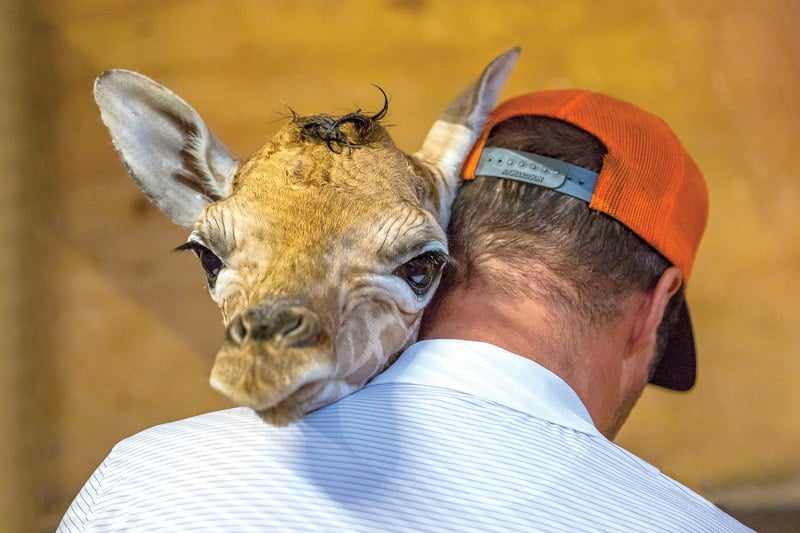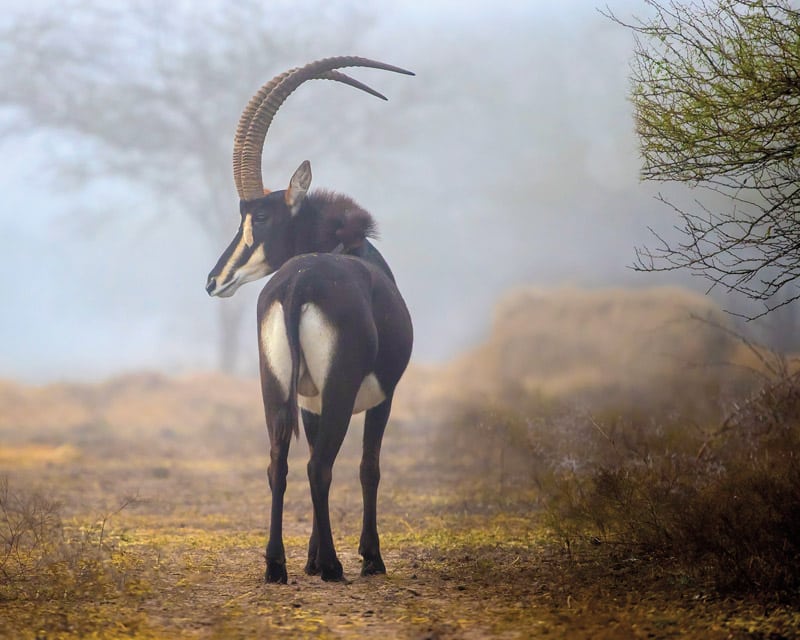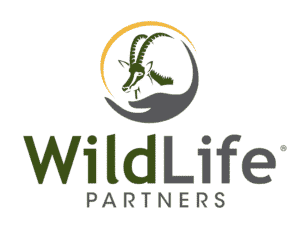
This article is featured in the Fall 2021 issue of Texas LAND magazine. Click here to find out more.
In 2020, a private landowner imported 10 white rhinos from Namibia. These rhinos are part of a growing group of non-native wildlife living on private ranches throughout the United States. In the southern U.S., from Florida to California, private landowners have become the primary caretakers of some of the world’s most endangered wildlife. Texas is the epicenter of this rapidly growing industry.
Species such as dama gazelle, Arabian oryx, Masai giraffe and Grévy’s zebra have become not only the property of landowners, but these animals have become a valuable asset class and an income-producing investment.
Critically endangered species from across the globe are thriving in private hands. Investors are claiming profits and their actions are saving wildlife for generations to come.”
What started as excess animals from landlocked zoos has evolved into a multi-billion-dollar industry. In recent years, demand is being fueled by tax incentives, capitalism and enthusiasm for wildlife conservation. A firm foundation built over the last 50 years is giving the industry tremendous support and staying power. No longer just a hobby for the rich, non-native wildlife has found its way into the hands of capitalists. As a result, critically endangered species from across the globe are thriving in private hands. Investors are claiming profits and their actions are saving wildlife for generations to come.1
Where did they come from?
Simply put, zoos. Like all entertainment attractions, something new is required to keep our attention and get us to visit again and again. In the case of large city zoos, new offspring sell tickets. Everyone loves seeing a newborn giraffe, zebra or rhino. What most have never considered is that these animals live for decades, and zoos simply do not have the space to house them while continuously breeding. Since the 1950s, this has resulted in a steady supply of zoo animals making their way into the hands of wildlife-loving landowners.
Although occasional imports have occurred since the 1980s, it is nearly impossible to import antelope (ruminants) because of diseases in wild populations. This inability to import new animals plays a huge part in the scarcity and limited availability.

How many nonnative species of hoof-stock and animals are in the U.S.?
Starting with a single ranch and one species in the 1920s, today there are thousands of landowners housing a plethora of exotic wildlife. While no precise census has been conducted in the last decade or more, there are general estimates that can be made.
There are approximately 100 species of hoof-stock that private landowners are breeding. Between free-ranging and captive-bred populations, there are easily more than one million non-native animals on private ranches. Species such as axis, blackbuck and aoudad lead the way with several hundred thousand head per species. These three groups account for the vast majority of the population. Species such as sable, kudu and nyala each have three to four thousand animals for their respective species.
Exotics are grouped into two categories: commons and supers. Commons are just that; they are not particularly rare and are regularly found free ranging. Axis, blackbuck, aoudad, nilgai and fallow deer fit into this group. These species are relatively inexpensive and are more geared towards entertainment and pleasure than investment. They are generally seen as the entry level animals for those making a passive entry into the industry.
Supers, however, are species such as sable, Grant’s gazelle, impala and kudu. These species, generally speaking, have fewer than 4,000 animals each. Some species such as Grévy’s zebra, cape buffalo and giraffe are limited to a few hundred head. This rarity is driving their value to epic levels, and without the ability to increase the population any faster than mother nature allows, it will take decades before supply meets demand.
What is the financial benefit and why?
While most people would never consider a giraffe or a kudu as being the same as a printing press, a manufacturing machine or heavy equipment, according to the federal tax code, they are the same.
Section 179 (and 168k) of the United States tax code covers depreciation of business equipment. Livestock, a 179 asset, is classified as business equipment. Since 2017, the current depreciation rate for business equipment is 100 percent in the year of purchase. Since exotic wildlife is classified as livestock by the Texas agriculture code, (chapter 1, SEC 1.003(3)), the purchase of breeding groups of exotic wildlife is 100 percent tax deductible in the year it is acquired.
To simplify this further, landowners that acquire breeding groups of exotic wildlife are considered to be in the breeding business. All business equipment being used for this enterprise is eligible for section 179 depreciation. This tax incentive is causing a groundswell of demand for new purchases of already scarce and limited animals. There are certain limitations to the deductibility, therefore it is important that a potential investor consult with their financial professional prior to making an investment for tax purposes.

Owning exotic wildlife in an IRA?
Yes, you read that right. . . . As the result of companies like San Antonio-based Wildlife Partners developing a syndicated investment vehicle, not only can landowners acquire exotics for their ranches, but qualified accredited investors across America can participate as well. They can do this without ever leaving home.
In 2018, a third-party due diligence company was hired by an investment firm to conduct a due diligence analysis of the program. This in-depth inspection of the program allowed the company to launch its product through a network of financial professionals. Since 2018, nearly $15,000,000 have been invested in exotic wildlife through these offerings. These investments can be made through an IRA for qualified participants. In some cases, conversions of an existing IRA to a Roth IRA have resulted in significant tax savings. Of course, all investments involve risk, and an investment in an exotic animal breeding partnership has specific risks that a potential investor must be aware of, including, but not limited to, the potential limited market for offspring, loss due to disease, and even the weather.
Private landowners have had the corner on the market for exotic wildlife over the last 40 years. Suddenly, investors from across the U.S. have become acquainted with the industry, and the result is tens of millions of dollars of new capital being deployed into the market every year to the benefit of landowners and wildlife populations.
So, what does the future look like for exotics?
Most Texas ranchers believe that the outlook for non-native, rare and endangered wildlife is tremendous. With capitalistic investors at the helm, charting the course towards profitability and sustainability, critically endangered animals from across the globe are being given shelter, protection and excellent care. Texas ranches are becoming the Ritz Carlton for exotic wildlife. With extremely limited supply and new purchasers of offspring entering the market consistently, sale prices have escalated recently, and prior investors are reaping the benefits. By receiving significant tax savings through the acquisition of exotics, and revenue from the sale of offspring, we believe a new form of wildlife conservation has emerged as a proven strategy for the future!
1Past performance is not necessarily indicative of future results.

For more information on Wildlife Partners, see WildlifePartners.com or call Brian Gilroy at (866) 377-3000. Follow Wildlife Partners on Facebook
